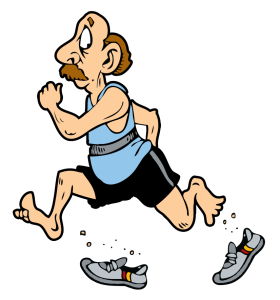The natural fallacy has been coming up a lot lately. The fallacy is that marketers use the appeal to nature to imply that something is better because it is natural. The implication is that because it is natural, then this means that it is better for your. It may or may not be better for you, it is just to appeal to nature to imply it is better, is a fallacy. There are plenty of natural things that the natural that are bad for us, so you can see to appeal to nature is flawed. Arsenic is a natural substance and it is certainly not good for you. The reason it is coming up is that ‘natural running’ is being widely promoted as being good as its ‘natural’ which is the fallacy.
Archive for May 2013
The ‘Overpronation’ Issue
This is one of those topic that is so nonsensical but it still consumes a lot of time to deal with all the myths. I first blogged about it here and more recently here. I still do not get why so many do not get it and so many think they are experts it in. Overpronation is no necessarily a problem – it is a problem if it contributes to the load in the tissues that is causing an injury. There are a zillion different causes of overpronation, so there is not one size fits all when it comes to treating it. This leads to so many myths and so much mistreatment of it. The issues surrounding the understanding of overpronation do not seem to be getting better, but getting worse! There is so much more work to be done and education to be undertaken. Pronation mythbusting never stops!
Continuing Professional Development (CPD)
This has always been an interest of mine and I have long been running many different courses of the years (including the Clinical Biomechanics Boot Camp in 7 different countries so far!). I have also been very opinionated in my views on it as I don’t think most of it works like it is supposed to. Most CPD systems fro professionals around the world are based on the number of points or hours that are accumulated. This sounds good on the surface, but the problem with it is that it is not guarantee that learning or a change in behavior has actually taken place (which is the point of CPD!). The aim should not be to measure the input (ie points or hours), but to measure output (ie how much learning took place). In the online CPD program that I run, that is exactly what we do. Patients or students or clients don’t care how many hours you spend at conferences, they care about the learning you have to help their problem and improve them.
